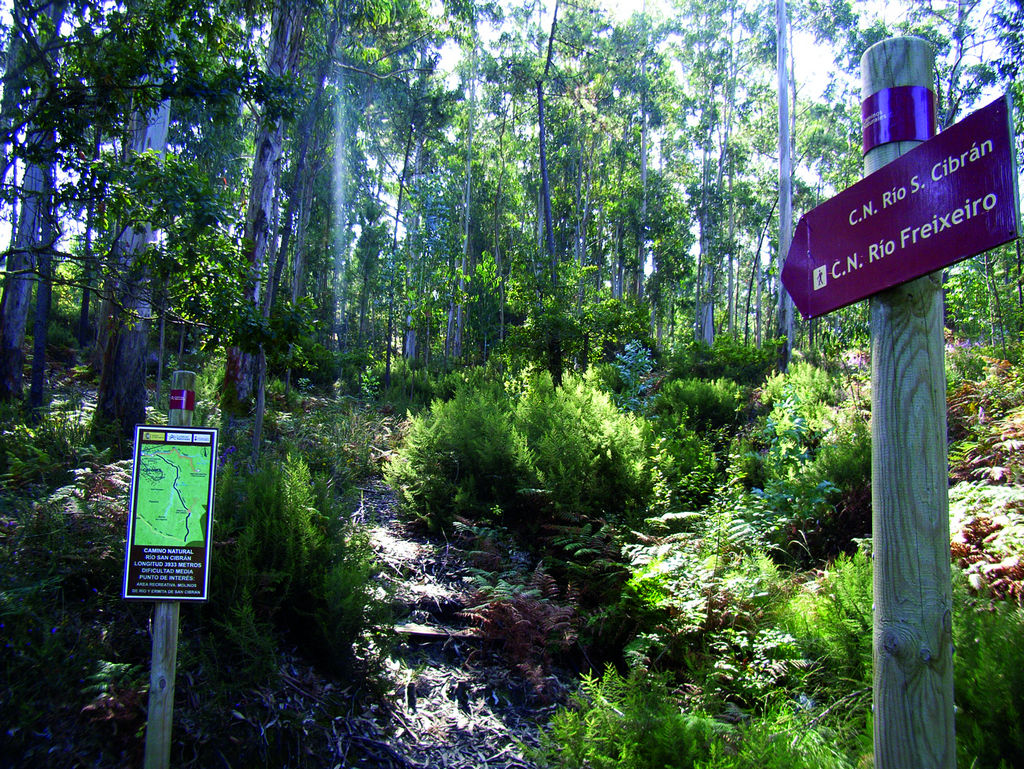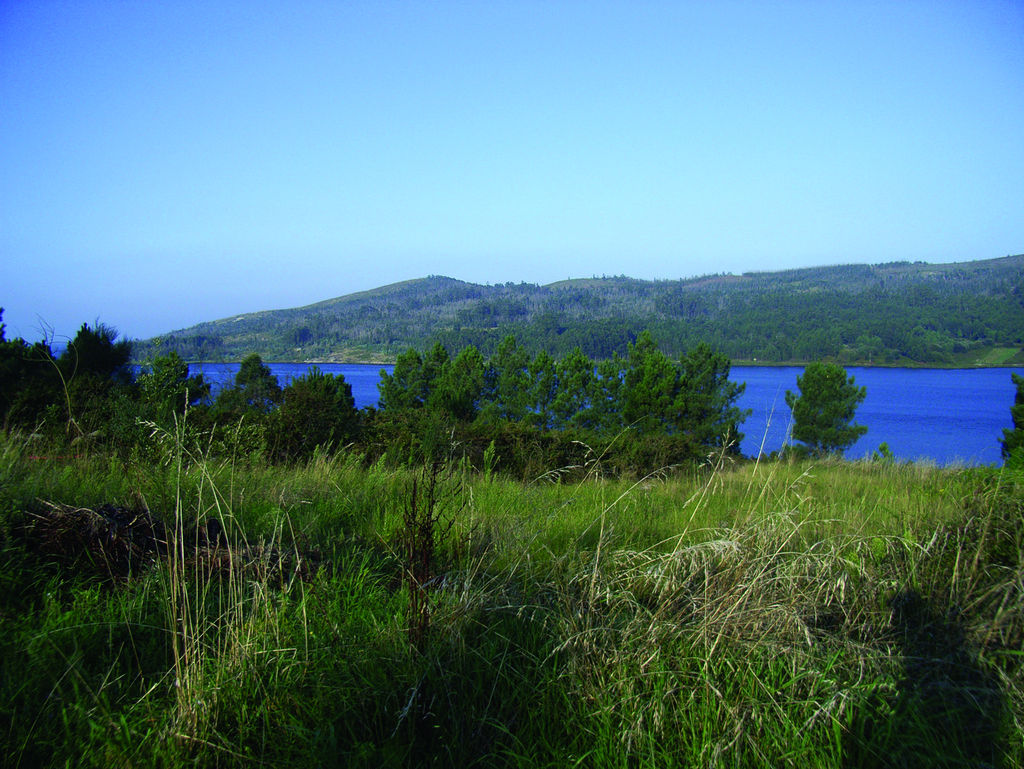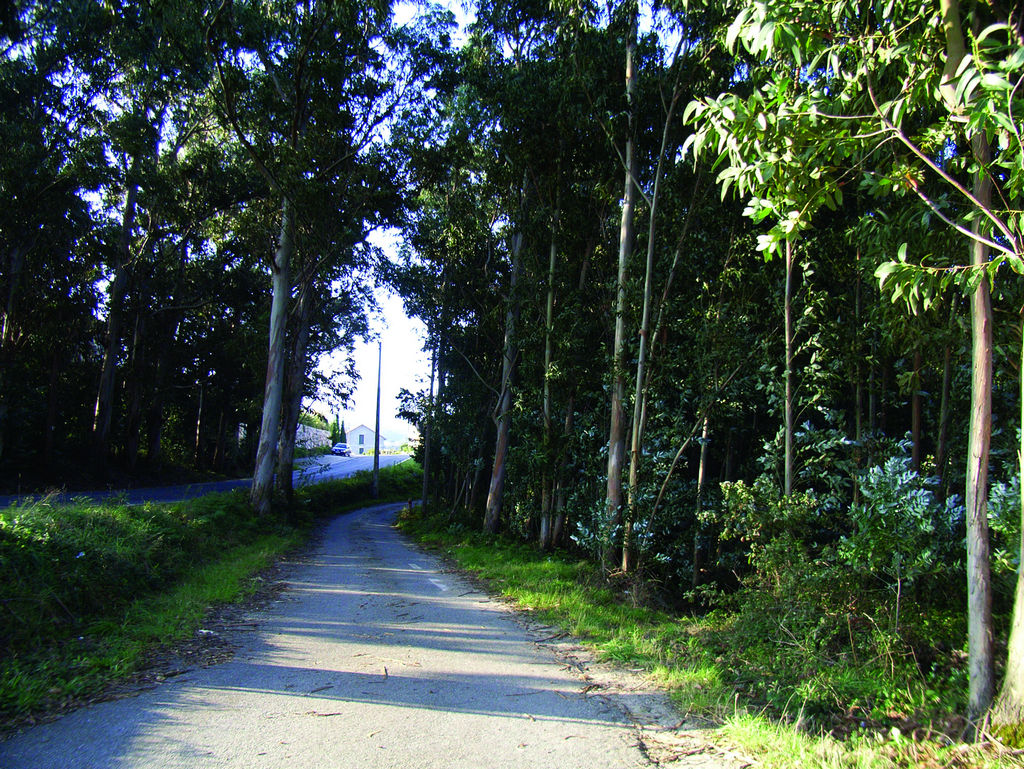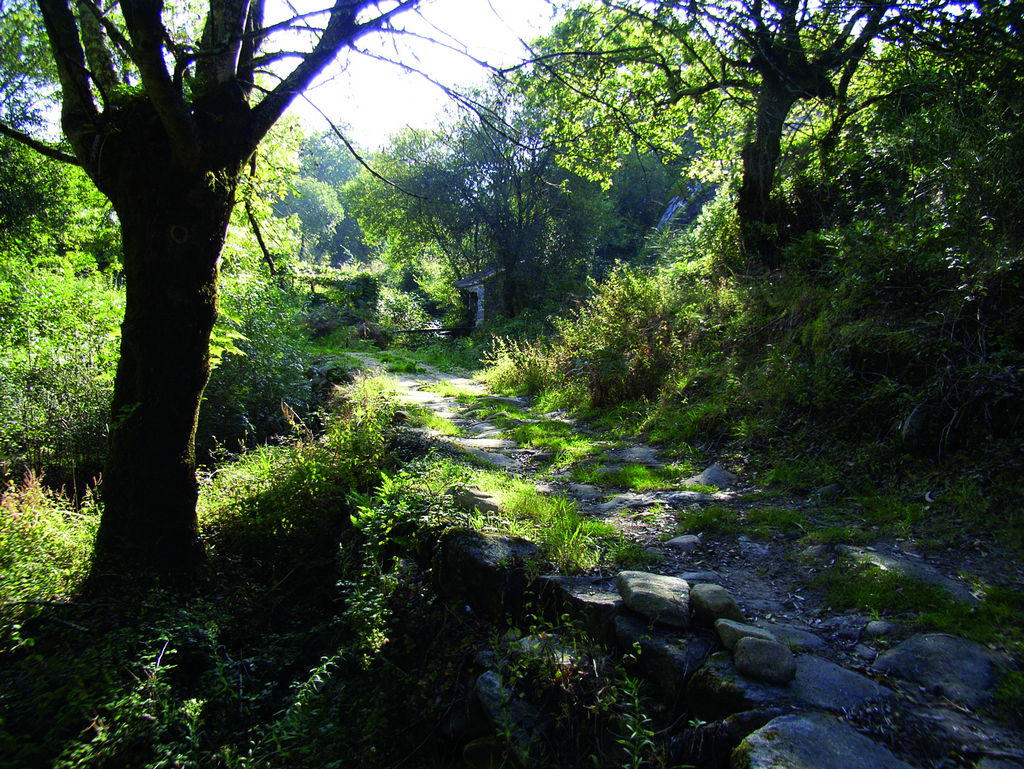- Home
- Rural Development
- Nature Trails
- Nature Trails
- Northwest Sector
- Las Sendas en Abalo
Sendas en Abalo Nature Trail
Description

Four mountain routes to the sea
This quiet route offers travellers the opportunity to understand the essence of the Galician landscape: calm, clear rivers, where it is not uncommon to see a centenary mill, rolling meadows alongside the river, and lush eucalyptus or oak forests that conceal natural promontories overlooking the ocean and the estuary.
1 - Camino Real Route:
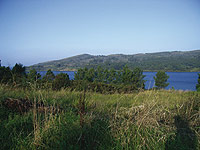
The route begins at the River Freixeiro, a few metres before it joins the River Ulla, next to a house with a concrete bridge that must be crossed to reach a paved road perpendicular to the route. It continues towards the viewpoint over Arosa estuary, flanked by a stone wall lined by eucalyptus.
The route winds under a canopy of dense vegetation towards a paved road lined with houses and eucalyptus trees (Eucalyptus sp.)on both sides, then passes through a farm, hugging its wall, until it reaches the main road PO-548. Here, it turns onto a grass path towards a promontory overlooking Arosa estuary, from where it climbs down to an intersection and continues along a paved road between houses.
At the end of paved road, it turns onto a grass path leading to the village of Cores, and, after crossing the road PO-548, arrives at Curva Patiño recreation area, where the next route begins.
2 - Souto da Vila Route:
The Souto da Vila route starts at Curva Patiño recreation area, and runs between a riparian and eucalyptus forest. It heads upstream to a meadow and continues along a path that leads to a cobbled road. Past Dos Freixos mill, it reaches the houses and arbours that are in the lower part of the town of Cores.
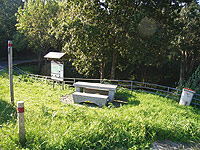
The Trail continues between stone walls and reaches a fork after crossing the river. The route can continue straight ahead to the village of Moroi, next to the Mirlo Blanco rural hotel and its chapel, and visit the As Tixolas Petroglyphs, or continue to the left through meadows to A Devesa recreation area.
From here, the route continues upstream, past a fountain. Further on, in an oak forest, it begins to climb up a bay tree-lined bank to a hill covered with eucalyptus and several water mills, including the "Dos de Campo" mill and the famous "Do Portugues"mill.
The route drifts away from the river to continue amidst brooms and vineyards to Souto da Vila, from where it heads down the main road to the village of Abalo, and then, at the first intersection, turns onto the road leading to Freixeiro. The route begins to climb between houses to a roundabout, and continues to the right, for about 300 m, along a paved road that ends at the River Freixeiro
3 - Los Molinos de Viento de Abalo Route:
This short route starts at the Abalo roundabout, along the dirt track on the left. At the first intersection, it climbs to the right towards a signposted path that leads directly to the Abalo windmills.
4 - Freixeiro River Trail:
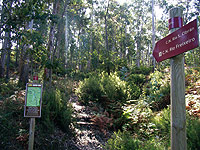
The upstream route starts at the chapel of San Cibrán along a path lined with common oaks (Quercus robur) that are currently being replaced with gorse (Ulex sp..) and eucalyptus. Following the River Freixeiro always upstream, the route continues along a path that ends at the top of the mountain where the Camino Real route starts, only a few metres from where the Freixeiro empties into the River Ulla. Due to the high humidity of this last section of the Sendas de Abalo Nature Trail, the vegetation in this area is exceptionally dense and regenerates very quickly.
Sites of interest
Profile
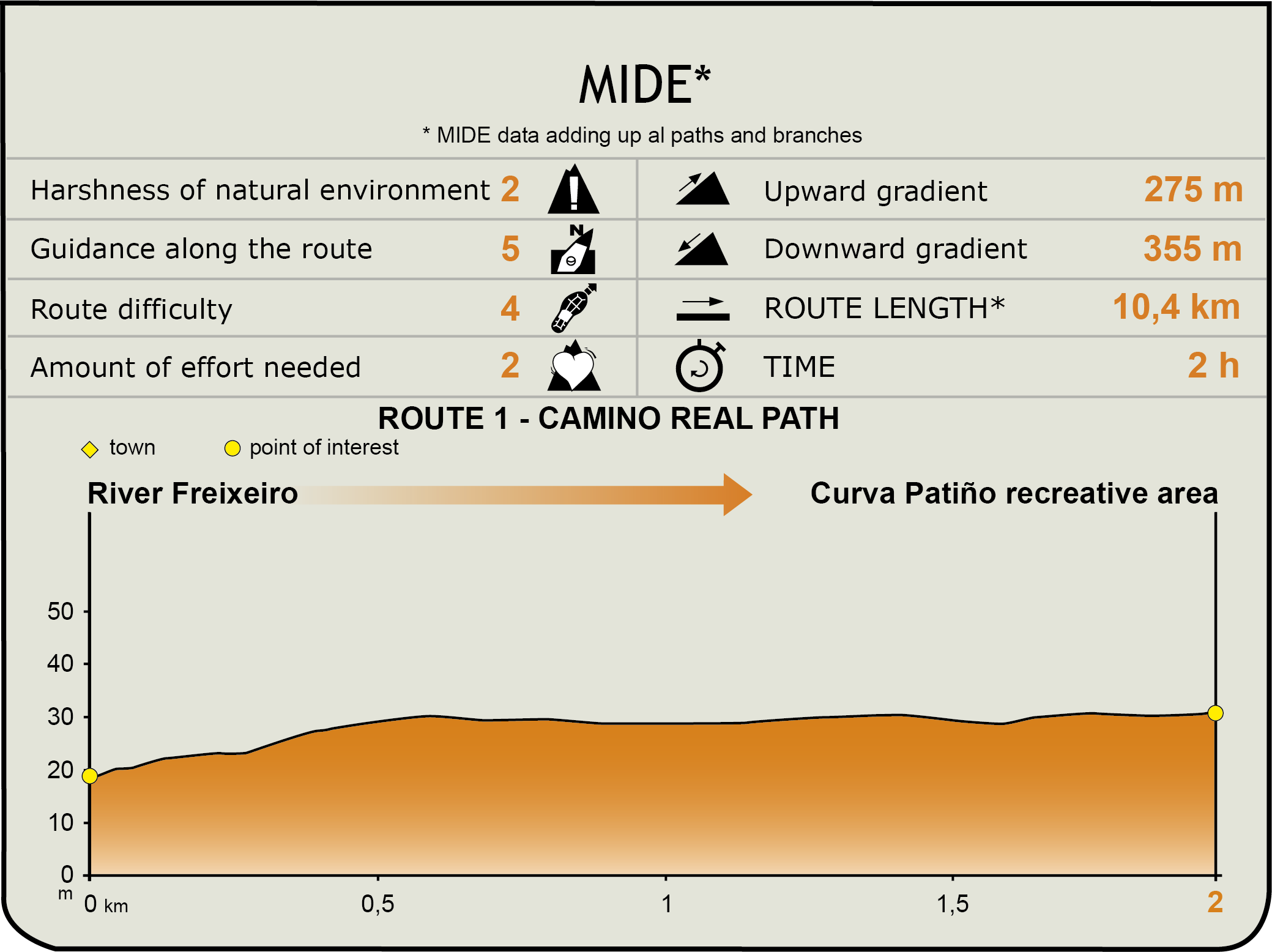
MIDE (Method for the Information of Excursions)
Featured
Información adicional
Piedras Miudas lagoon/Lagoa das Pedras Miudas
Located close to this Nature Trail, this lake is a mandatory stop for all visitors who decide to walk by any of the four routes we just explained.
This place, which is quite unknown to those visiting this region of Galicia, was formed due to the action of nature a few 600 meters away from the Freixeiro River, and only 3.8 km away from the shrine of San Cibrán. What was once a quarry used for rock extraction has now become a space of high natural value, thanks to the progressive accumulation of water within. Today, this lake hosts an important amount of biodiversity, with many species of fish, reptiles, amphibians and birds.
In 2008, aware of the need to protect this environment created without the intervention of humans, the Regional Government of Galicia decided to declare the lake a Natural Area of Local Interest. Likewise, in 2009, the High Court of Justice of Galicia rejected the possibility of turning the lake into a landfill, emphasising the high landscape value of the area.
